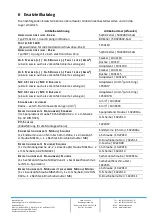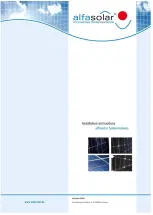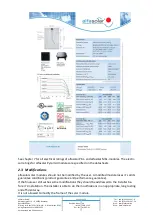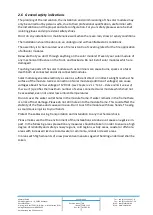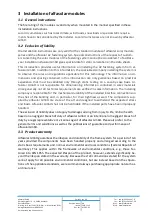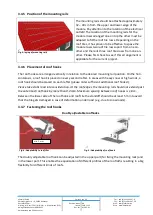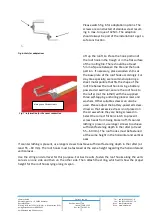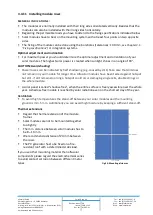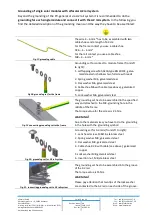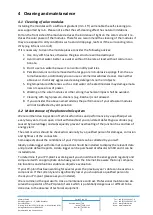
alfasolar GmbH
Ahrensburger Str. 4 6, 30659 Hannover
Geschäftsführer:
Dipl.-Ing. M. Denz (CEO) / Dipl.-Kfm. K.-W. Hoffmann (CFO)
Amtsgericht Hannover HRB 544 55
Gerichtsstand und Sitz: Hannover
Seite 14 von 29
Tel:
Fax:
Mail:
Web:
+49 (0) 511-261 447-0
+49 (0) 511-261 447-50
sales@alfasolar.de
www.alfasolar.de
Revision-Index:
Issued:
Doc.-Nr.
08
2012-12-13
ALE-IEC-01
3.4.5
Position of the mounting rails
Fig. 3: laying of mounting rails
The mounting rails should be attached approximately
32 40 cm from the upper and lower edge of the
module. Pay attention to the location of the electrical
outlets! The location of the mounting rails for the
module rows arranged one on top the other must be
adapted to fit the roof tile rows. Depending on the
roof tiles, it has proven to be effective to space the
module rows two roof tile rows apart from one an-
other and the rails three roof tiles rows from one an-
other. Please first check to see if this arrangement is
applicable for the current project.
3.4.6
Placement of roof hooks
The roof hooks are arranged vertically in relation to the desired mounting rail position. On the hori-
zontal axis, a roof hook is placed on every second rafter. In areas with heavy snow or high winds, a
roof hook should be placed on each rafter (please order sufficient additional roof hooks!).
Please take static load into consideration. At the roof edges, the mounting rail should not extend past
the outermost roof hook by more than 0,4 mm. Maximum spacing between roof hooks is 1,8 m.
Between the lower side of the roof hook and roof tile the standoff should be at least 5 mm to avoid
that the tile gets damaged in case of deformation under load ( e.g. due to snow loads) .
3.4.7
Fastening the roof hooks
Doubly ajdustable roofhooks
Fig. 4: Adaptability to roof tiles
Fig. 5: Adaptability of roof hook
The doubly adjustable roof hook can be adjusted in the upper part (for fixing the mounting rails) and
in the lower part. This enables the equalization of different profiles of the roof laths resulting in a big
flexibility for different kinds of roofs.
min. 5 mm

